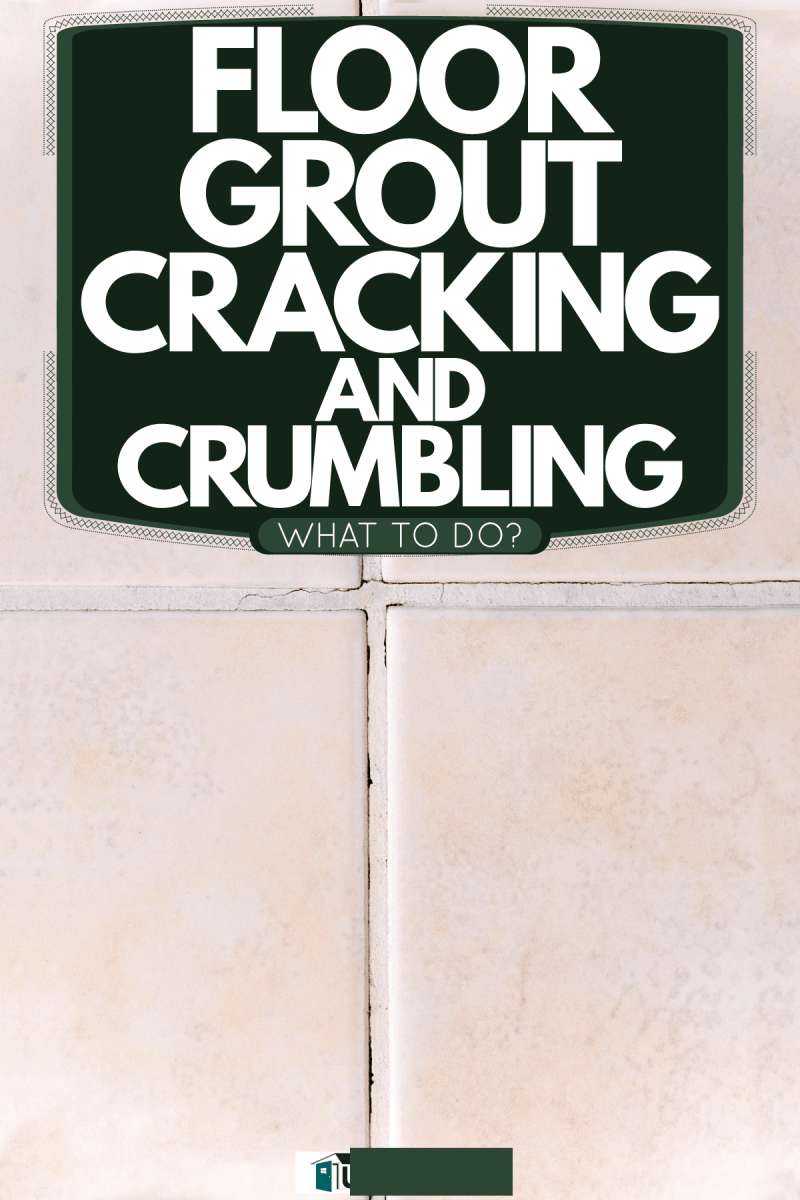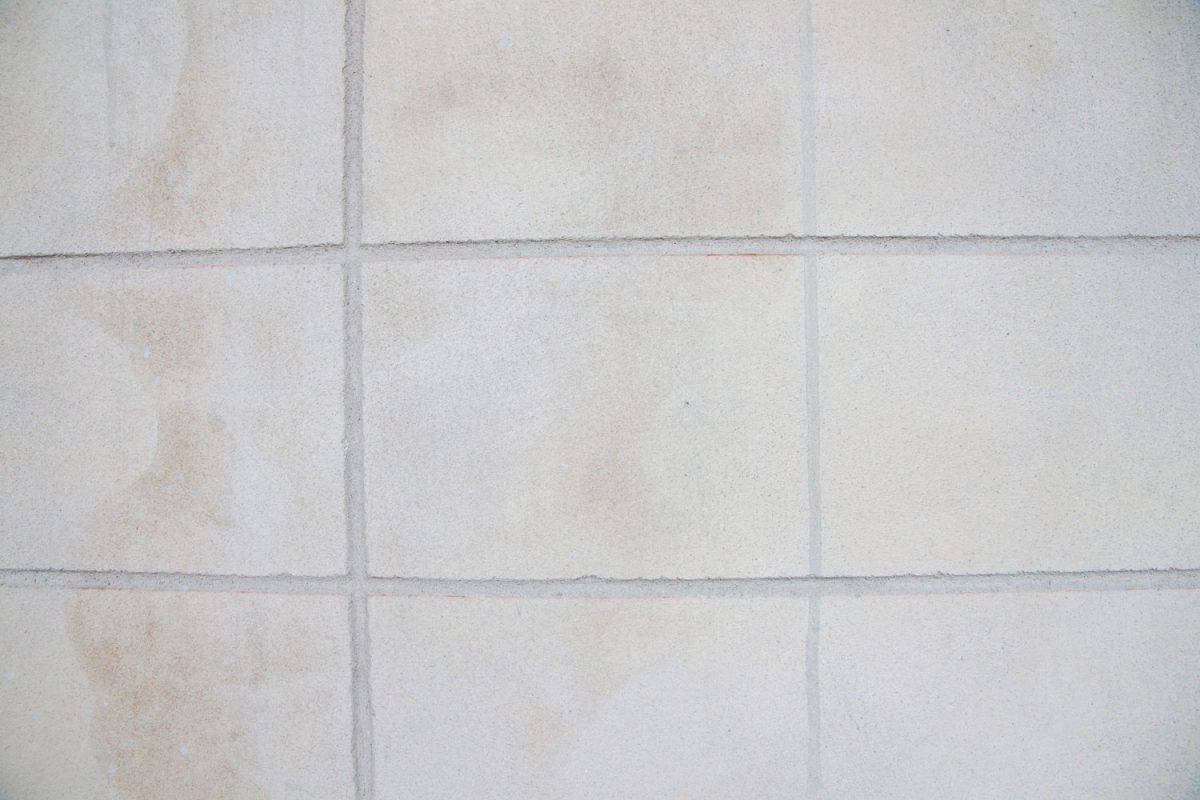Grout is a crucial part of the flooring, although it can often go unnoticed. That’s because floor grout fills in the gaps between tiles. So, you’re probably wondering how to fix floor grout the moment it begins to crack or crumble to prevent your floor tiles from becoming damaged and unstable. You wouldn’t want that in any room, let alone the kitchen or bathroom, which usually have tiled flooring. So, we have carefully researched what to do about cracking or crumbling grout.
Cracking and crumbling floor grout are actually two different problems, each with their own solution. Grout naturally tends to crack with age and use. You can use caulk to successfully repair cracked areas. But floor grout can fully crumble when it hasn’t been installed correctly. This usually means all of the floor grout will need to be removed and then reinstalled.
Grout isn’t just meant to improve the style of your floor. It serves some very practical and important functions, so it should be treated accordingly. Keep reading to learn why your grout is cracking or crumbling, how to fix the problem, and what floor grout is best for you.

What causes floor grout to crack and crumble?
Floor grout helps add personality to your tiles, but it also adds durability. Grout protects tile gaps from any filth or damaging debris.
Age and Usage
Unfortunately, grout is still just a mix of cement and water, and it’s sold in either sanded or un-sanded forms. Grout on the floor is usually sanded to help fill in wider gaps.
Click here to find this sanded grout on Amazon.
All of these common ingredients will still be subject to natural wear and tear, which is the most likely reason for your grout to crack. After all, any floor is asked to withstand a lot of foot traffic. Any extra activity that could damage the floor, such as moving furniture or appliances, would also affect the grout.
Not Installed Correctly
Aside from age, grout can sometimes crack during installation. Sometimes, the tile installation didn’t use enough thin-set for the grout to catch onto. Thin-set is the adhesive that bonds the tiles to the subfloor.
Click here to find this thin-set on Amazon.
Otherwise, water may have disrupted the drying process after you applied the grout. That’s because water is what creates the chemical reaction that will harden the paste. Adding any water to the drying grout would weaken and crack the mixture.
That’s why you can also find grout that is either pre-mixed and ready to go or unmixed. You need to combine the grout with water yourself if you purchase unmixed grout.
Click here to see this unmixed grout on Amazon.
When you need to mix your own grout, it can be easy to combine the wrong amounts of each ingredient. It’s also tough to mix the recipe for just the right amount of time. The mixing process is so complicated; you’re likely to end up with an unbalanced result. This is typically what causes your grout to crumble into a frustrating powder.
How to fix cracked grout on tile floor
If your grout is only beginning to crack from age, you may not have to replace everything just yet. Areas that see more traffic than others may begin to crack sooner from wear and tear.
Click here to find this tile and grout caulk on Amazon.
In this case, you can use a popular sealer and filler called caulk. It can be made of a few different materials, including silicone or latex. This makes caulk very flexible, which means it can be used to fill gaps just about anywhere.
You can read this post to learn if you should caulk between your baseboard and the floor. Caulk can even work with concrete, which is why caulk is the perfect solution to cracked grout.
In fact, you can purchase grout caulk, which is specifically designed to repair cracked grout. Just keep in mind that caulk isn’t sold ready to go, right off the shelf. Usually, you will need to have a caulk gun to apply it. This tool ties a trigger mechanism to the plunger on the tube of grout caulk. That way, you control how much caulk is applied, and you won’t have to worry about any backlash.
Click here to see a caulk gun on Amazon.
But if you’re worried about investing in a new tool, there are much smaller tubes of caulk. These can simply be squeezed, but they’ll only be effective when you need to fix smaller areas.
Click here to find this squeeze tube of caulk on Amazon.
With either approach, you just need to fill in the damaged grout lines. Then, simply smooth out the caulk, and give it enough time to dry. Although caulk has very limited colors, don’t worry. Caulk can typically be primed and painted after it has cured for a while. But it might be a little tough to match the caulk perfectly with the grout if you used a special grout colorant.
How do you fix crumbling grout?
Crumbling grout is usually a more serious problem than cracking grout. That’s because it was likely caused by a mixing issue when you were prepping the grout. If your new grout is powdery, you should probably remove the incorrect grout and re-install an entirely new layer.
It’s generally pretty easy to remove powdery grout. If you don’t want to worry about using the wrong tool and ruining it, you can purchase a grout cleaner. This is a removal tool that uses a blade specially designed to scrape away grout. Fortunately, grout removal tools are generally pretty inexpensive.
Click here to see this grout removal tool on Amazon.
Once you’re done removing the old grout, you should wash out the area. Then, you can begin mixing the new batch of grout. Make sure that you blend everything into a consistent paste. Then, remember to get each joint wet between the floor tiles before applying your grout. You need to completely fill each gap with the new mix of grout.
Also, make sure to use sanded or un-sanded grout as needed. Sand adds thickness and strength to grout, so it’s ideal for floors. Un-sanded grout is typically reserved for wall tiles because it can fit into smaller gaps. Also, sand may be inappropriate for most areas that use wall tiles, such as the bathroom.
You can read this post to learn if floor and wall grout should match.
What is the most flexible floor tile grout?
There are flexible alternatives to traditional grout, such as silicone filler or epoxy grout. You can even find silicone grout in particular. However, flexible grout is its own kind of product.
Typically, this means the grout was modified with some kind of unique polymer. For example, some flexible grouts are made from polyurethane, or urethane for short. One of the signature characteristics of urethane is how flexible it naturally is.

Can you put new grout on top of old grout?
Technically, it is possible to put new grout on top of the old layer. But the results will be very underwhelming. Most of the time, it’s best to completely replace floor grout that has broken in any way.
This is because the old grout is occupying all of the space your new mixture would need. If you just lay new grout on top of the old mix, it won’t provide any of the same durability. It will simply be a thin coating, sitting on top of weakened grout. Floor grout should completely fill in the gaps between the tiles to achieve full strength.
Also, the newer grout won’t be able to adhere very well. This compromises the floor grout’s ability to protect the edges of your tiles. Lastly, the old grout will probably still show through such a thin layer of new grout.
Overall, this means that you should definitely remove old grout before installing a new mix. Otherwise, you would be impairing all of the style and function that floor grout is intended to provide.
Summary
It’s easy to overlook grout because its primary job is to highlight and protect your floor tiles. But your entire floor can fall apart if you don’t treat the grout right. Now you know what you need to do in order to repair old grout or even reinstall some new grout that just didn’t work out. All that’s left is choosing the best grout for the job, and you’ll be able to walk across your tiles again soon enough.







